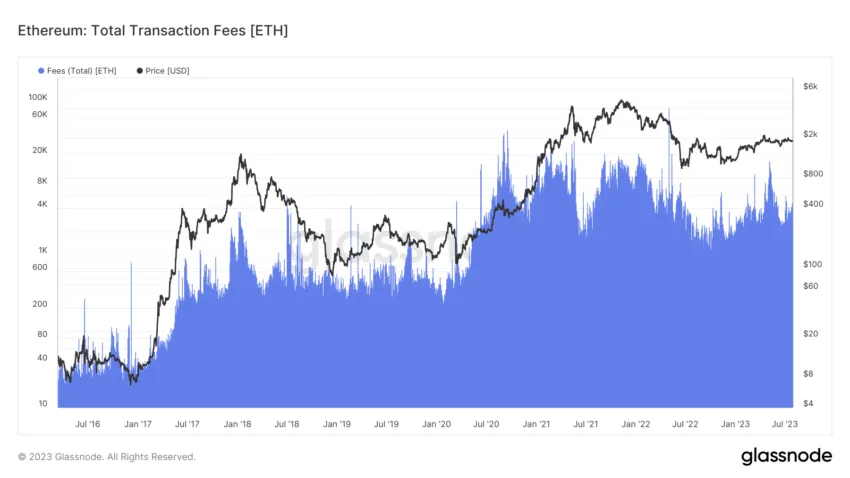What Will the Next 8 Years Bring for Ethereum?
Today marks the 8th anniversary of Ethereum’s Mainnet launch, which took place on July 30, 2015.
As the community reflects on its accomplishments, they’re also setting their sights on Ethereum’s promising future.
The Ethereum Foundation Guides the Way
The Ethereum Foundation, while not a governing entity, has been instrumental in steering the network’s trajectory since its inception.
Among its many responsibilities is the critical task of curating the Ethereum Roadmap — a blueprint that lays out the collective aspirations of Ethereum’s global cohort of researchers and developers. All proposals are welcome, but only after they have been subjected to thorough scrutiny, discussion, and iteration do they make it to the roadmap.
The roadmap zeroes in on four main goals. These include slashing transaction fees, bolstering security, refining the user experience, and ensuring Ethereum’s longevity.
The Challenge: Soaring Ethereum Gas Fees
Ethereum has seen exponential growth in transaction volumes since 2015. This surge has sometimes resulted in network congestion, causing gas fees to spike dramatically.
Layer 2 solutions, often referred to as L2s, employ rollups to streamline data written to the blockchain to alleviate network congestion. This method has managed to curtail transaction fees for users somewhat. However, as transactions increase, even rollups can become costly.

Interestingly, over 90% of rollup transaction costs are attributed to permanent data storage on Ethereum, as noted in the roadmap.
Read More: Layer 1 vs. Layer 2: What Is the Difference?
The Solution: Proto-Danksharding
In pursuing more affordable transactions, Ethereum is gearing up for an upgrade termed “Proto-Danksharding.” This will enable rollups to utilize temporary data “blobs,” which will be discarded when no longer relevant.
Full-fledged Danksharding is poised to further reduce L2 transaction costs in the years ahead.
Moreover, as Ethereum turns eight, it is also exploring the potential of Zero-Knowledge Ethereum Virtual Machines (ZkEVMs) to enhance scalability.
Safeguarding Ethereum’s Future
A primary focus for the Ethereum Foundation is refining the Ethereum Virtual Machine (EVM) codebase. A streamlined EVM will not only simplify development but will also reduce the risk of bugs.
Additionally, the roadmap acknowledges the looming shadow of quantum computing. While these ultra-powerful machines might still be decades away from threatening modern blockchains, their unparalleled processing capabilities could eventually decipher the cryptography safeguarding Ethereum.
Although this issue remains on the horizon, proactive research is underway to fortify Ethereum against potential quantum attacks.
Disclaimer
In adherence to the Trust Project guidelines, BeInCrypto is committed to unbiased, transparent reporting. This news article aims to provide accurate, timely information. However, readers are advised to verify facts independently and consult with a professional before making any decisions based on this content.